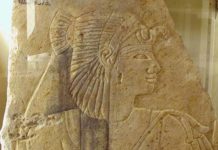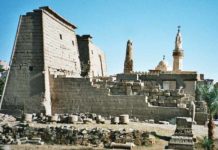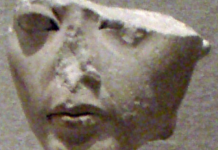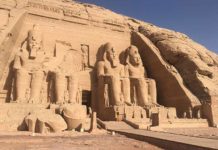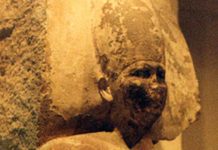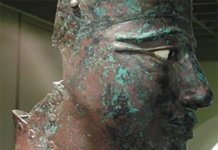Researchers have studied the remains of King Tutankhamun for over 90 years and are still unable to decisively conclude what caused his death.
Ancient Egyptian King Tutankhamun was born Tutankhuaten and was most likely the son of the controversial ruler, Akhenaten. During Akhenaten’s 30 year reign, he had attempted to do away with the state religion, which was based on the worship of many gods, and in its place set down the worship of only one god, the sun disk Aten. He even built a new capital city, Akhenaten or el-Amarna, to honor the god. This turned the religion-based world of the Egyptians upside down, making Akhenaten a despised ruler.
Tut: the Boy King
The reign of Tutankhamun, 1332-1322 B.C., would therefore be critical in restoring Egyptian religion and politics. But Tut was only a boy when he became king, and relied heavily on a team of advisers and generals to assist him.
Tut did manage to move the capital of Egypt from El-Amarna back to Memphis, re-establishing Thebes as the religious center of Egypt. Along with this, Tut and his young wife, Ankhesenamun, dropped the “-aten” part of their names and replaced them with “-amun” to symbolize the renewal of worship of the traditional gods.
These two accomplishments would seem to foretell a promising rule, but the young king died suddenly at age 19 and was hastily buried in a tomb which was not meant for a king, with his treasures haphazardly organized. Could this have meant that his tragic death was simply unexpected, or is it part of the body of evidence for a possible murder?
CT Scan of King Tut’s Mummy
Howard Carter and his team of explorers discovered the tomb of King Tut in 1922 in the Valley of the Kings, and subsequently performed an autopsy on his mummy in 1925 to determine the cause of his death. Carter and his team were unable to determine if the king was murdered, but cut Tut’s mummy into several pieces, reassembling it on the bed of sand that the mummy rests on today.
Decades later in 2005, a team of Egyptologists led by Zahi Hawass of Egypt’s Supreme Council of Antiquities were given one-time permission to scan Tut’s mummy using a CT Scan, generating 1,700 highly detailed three-dimensional images of his remains and allowing the scientists to differentiate between the injuries Tut received while alive, during the embalming process, and during the 1925 autopsy.
The team spent two months reviewing the images, calling in several international experts to work with them, and announced their conclusions on March 8, 2005. They denounced any murder theories and determined that damage done to Tut’s skull, including floating bone fragments, took place most likely after his death, either during the embalming process or the investigation done by Carter’s team.
Furthermore, a clump of matter found at the base of Tut’s skull, which was thought to be a blood clot from a traumatic blow to the back of the head, turned out to be nothing more than a hardened lump of embalming resin.
The team did find that Tut had two broken legs, and that a fracture to his lower left femur likely happened while he was still alive. He could have had an accident on his chariot, as his breastbone and some of his ribs were missing. They suggest he may have died from an infection caused by one these injuries.
Cause of King Tut’s Death Remains Unknown
Tut would have been highly susceptible to accidents and injuries, as the fused vertebrae in his neck suggest he may have suffered from Klippel-Feil Syndrome, a disease in which one cannot turn one’s head without moving the entire torso.
The team that performed the CT scan admitted that it is still possible his injuries and subsequent infection could have resulted from some kind of murder attempt or staged accident, but that he did not die of head trauma, which had been a popular theory for many decades.
Essentially, they were able to rule out a fatal blow to the head as cause of death and overall, did not believe he was murdered. However, with the hasty embalming, botched 1925 autopsy, and thousands of years of potential evidence contamination in between, the world may never know what really killed Egypt’s most famous king.
Sources:
- Dorfman, Andrea and Jeffrey Kluger. “Who Killed King Tut?” Time Europe 160, no. 12 (2002): 58-60.
- Inman, Mason. “Blow to Head Didn’t Kill King Tut.” Science Now (2005): 2-3.
- Reeves, Nicholas. The Complete Tutankhamun: The King, the Tomb, the Treasures. London: Thames & Hudson Ltd, 1990.
- Williams, A.R. “King Tut.” National Geographic 207, no. 6 (2005): 3-21.
- “CSI Egypt: Who Killed King Tut?” Current Events 102, no. 16 (2003): 1-4.
- “Unmasking King Tut.” Time 165, no. 21 (2005): 66-67.



